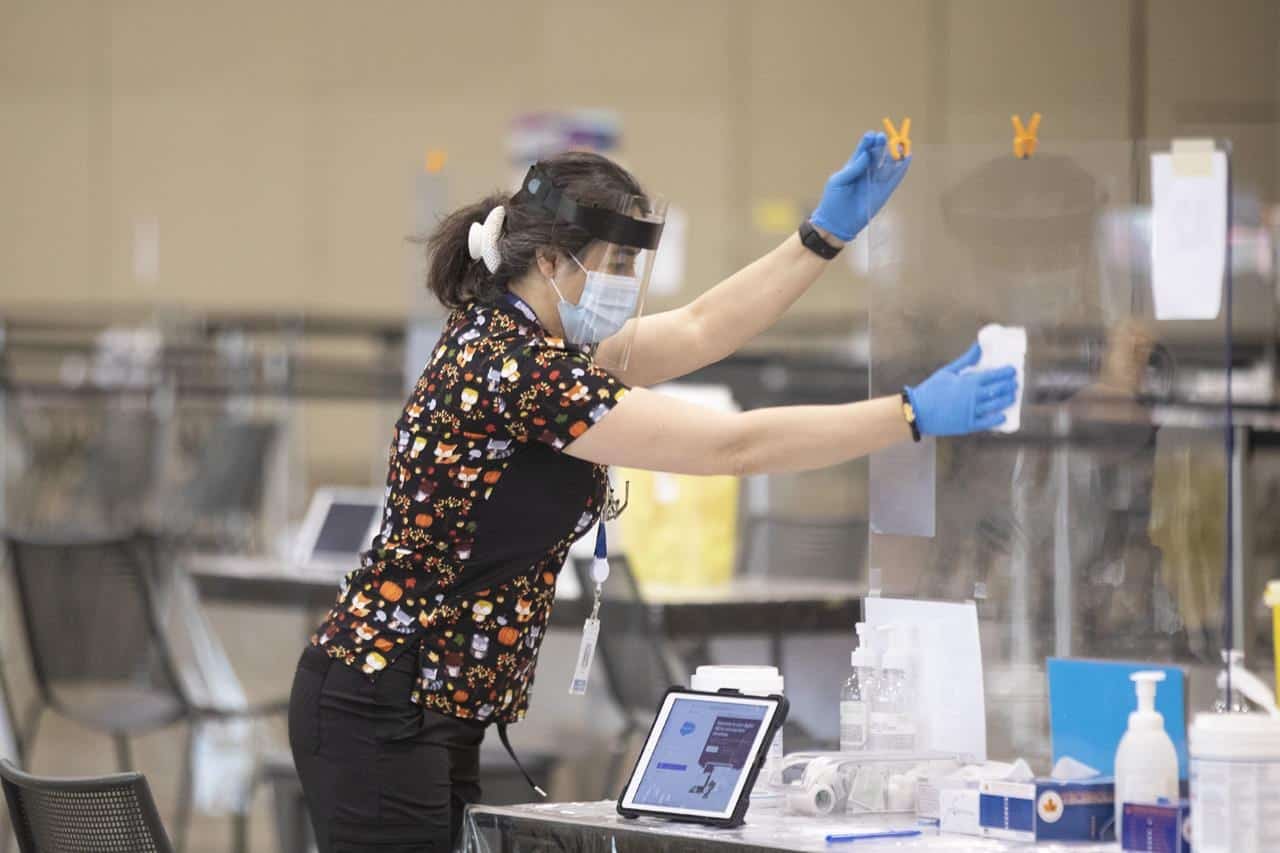Ontario vaccination hurdles remain before Missisauga and Brampton can move beyond step 3
Published August 6, 2021 at 6:55 pm

Ontario marked three weeks on Friday since entering the third step of its pandemic reopening plan but it has yet to hit the vaccination targets set for restrictions to roll back further. This means current restrictions will remain in Mississauga and Brampton.
The province previously progressed through earlier phases of its reopening within 21 days, but the government has established three firm thresholds that must be met before nearly all public health measures drop away.
Eighty per cent of all Ontarians aged 12 and older must have at least one shot, 75 per cent need to be fully immunized and all public health units must have fully vaccinated 70 per cent of eligible residents before the province can move on from Step 3.
The first condition is the only one that has been met so far.
As of Friday, 72 per cent of adults had been fully immunized, and only about half of Ontario’s 34 health units had met the third condition.
Health units across the province are now getting creative, with vaccine clinics at farmers’ markets, fire halls and beaches in addition to mobile teams and traditional sites, as they try to boost immunization rates.
“Residents and visitors aged 12 years and older are encouraged to add getting their COVID-19 vaccines to their summer to do list,” the Simcoe-Muskoka health unit said as it urged individuals to get their shots.
The region, where 68 per cent of all eligible residents were fully vaccinated as of Friday, said it is aiming for 90 per cent full inoculation to achieve herd immunity and protect those who don’t qualify for shots.
It is offering vaccines at parks, beaches, farmers’ markets, sports complexes and shopping centres, with staff wearing blue shirts and employee badges for identification.
All health units have reported at least 65 per cent full vaccine coverage. Seventeen units had fully vaccinated more than 70 per cent of eligible residents as of Friday. Eleven others had rates of 68 or 69 per cent.
Leeds, Grenville and Lanark in the province’s east reported the highest inoculation rate, with 79 per cent of residents 12 and older fully vaccinated.
The top doctor for the area said the local vaccination program has been “a broad community effort,” with four fixed clinics, mobile teams in smaller towns, paramedic outreach to homebound residents and involvement across health-care providers.
Dr. Paula Stewart said walk-in shots offered over the last few weeks have expanded access.
Halidmand-Norfolk, a largely rural health unit in southern Ontario, ranked last for vaccine coverage with 65 per cent of the eligible population fully vaccinated.
It started running vaccination clinics this week at fire stations in communities without easy access to larger clinics.
“The (health unit) faces several challenges, as it covers a large area with a smaller, rural population,” Norfolk County Paramedic Chief Sarah Page said in a statement last week. “Bringing vaccination opportunities to more convenient locations will help lessen transportation challenges people may be facing.”
Starting next week, Haldimand-Norfolk will also offer mobile clinics to community organizations and workplaces that request them.
“This program is intended to assist groups of residents who may be experiencing difficulties attending the mass immunization clinics,” it said.
Step 3 of Ontario’s reopening plan allows most businesses to reopen, but with capacity restrictions and other rules. There are also crowd limits on social gatherings and other events. The vast majority of those restrictions would lift after Step 3, although rule son masking indoors would continue.
Public health officials across Ontario have been urging residents to get vaccinated, particularly in light of the more infections Delta variant of COVID-19 that’s become dominant in the province.
Dr. Kieran Moore, chief medical officer of health for Ontario, has said infections will likely increase in the fall when people move indoors and return to classes.
The Ontario Hospital Association also warned this week of a looming fourth wave of infections among unvaccinated people, after a steady increase in the number intensive care COVID patients.
Ontario reported 340 new COVID-19 cases and 18 deaths from the virus on Friday, including several deaths that occurred more than six weeks ago. There were 110 patients in intensive care with COVID-related critical illness and 76 people on ventilators.
According to Public Health Ontario, from the end of June to the end of July, unvaccinated people were eight times more likely to become infected with COVID-19 than fully vaccinated people.
— Holly McKenzie-Sutter, The Canadian Press
insauga's Editorial Standards and Policies advertising






